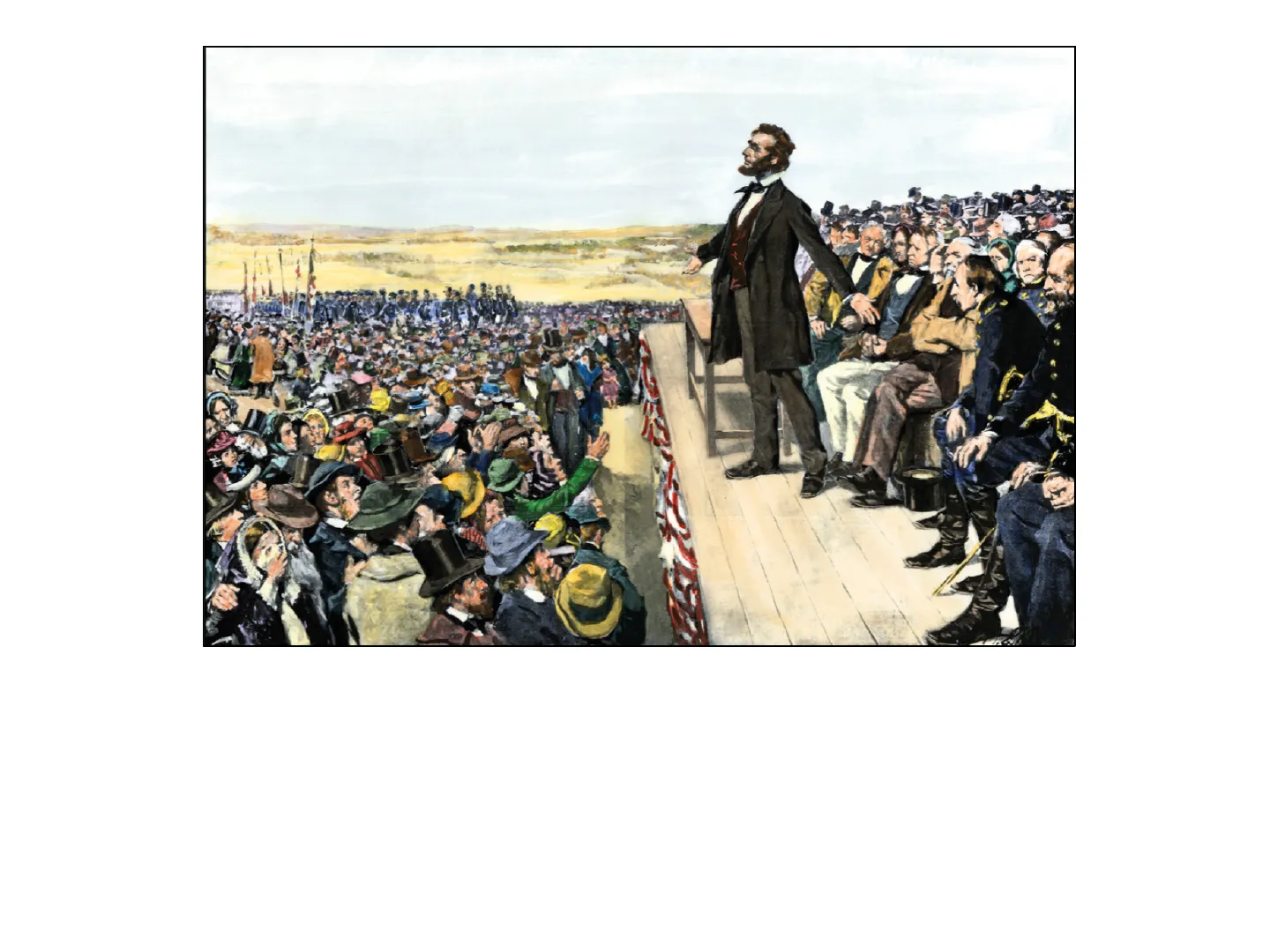America in the second half of the 19th century (1861-1901)
Slides from High school about America in the second half of the 19th century (1861-1901). The Pdf explores the history of the United States, focusing on the Civil War, including differences between North and South, key figures, and main battles. This History material is presented with concise text and illustrative images.
See more15 Pages


Unlock the full PDF for free
Sign up to get full access to the document and start transforming it with AI.
Preview
A Divided Nation
There were important differences between the North and the South in the US.
The North
- industrialized;
- growing numbers immigrants from Europe;
- increasingly urbanised and open to new commercial opportunities.
The South
- economy based on vast plantations of tobacco and cotton;
- about 4,000,000 black slaves;
- continued to rely on slave labour;
- life was based on a rigidly divided class system, with the aristocracy of the plantation owners still linked to the old values of gallantry and honor.
Abolitionist Movement
- Active in Northern States and among intellectuals
- Abolitionists wanted slaves to be freed.
- Northern abolitionists began to organise themselves into the Republican Party, whose candidate Abraham Lincoln (1809-65) won the presidential election in 1860.
The Confederacy
As a consequence of Lincoln's election:
- Eleven Southern states seceded from the Union and joined to form an independent 'Confederacy'.
- They formed the Confederate States of America with Jefferson Davis as president.
- The Confederate Constitution established the sovereignty and independence of each state and guaranteed the right of Southerners to own slaves.
- Lincoln refused to recognize the Confederacy and civil war broke out in 1861.
The Civil War
1861-1865 Conflict
The blue Northern troops commanded by Ulysses S. Grant. The grey Confederates led by Robert Lee. The Northern troops won.
Battle of Gettysburg, July 1863
Gettysburg was one of the bloodiest battles in the history of the Western hemisphere.
Gettysburg Address, November 1863
Later Lincoln delivered a famous speech at the dedication of the Soldiers' National Cemetery in Gettysburg, Pennsylvania. It has come to be regarded as one of the greatest speeches in US history.
LIBRARY OF CONGRESS
Gettysburg address delivered at Gettysburg Pa. Nov. 19th, 1863. [n. p. n. d.].
Gettysburg Address Text
Delivered at Gettysburg, Pa. Nov. 19th 1863. "Four score and seven years ago our fathers brought forth on this continent a new nation, conceived in liberty, and dedicated to the proposition that all men are created equal. "Now we are engaged in a great civil war, testing whether that nation, or any nation so conceived and so dedicated, can long endure. We are met on a great battlefield of that war. We have come to dedicate a portion of that field as a final resting place for those who here gave their lives that that nation might live. It is altogether fitting and proper that we should do this. "But in a larger sense we cannot dedicate, we cannot consecrate, we cannot hallow this ground. The brave men, living and dead, who struggled here have consecrated it, far above our poor power to add or detract. The world will little note, nor long remember, what we say here, but it can never forget what they did here. It is for us the living, rather, to be dedicated here to the unfinished work which they who fought here have thus far so nobly advanced. It is rather for us to be here dedicated to the great task remaining before us,that from these honored dead we take increased devotion to that cause for which they gave the last full measure of devotion, that we here highly resolve that these dead shall not have died in vain, that this nation, under God, shall have a new birth of freedom, and that government of the people, by the people, for the people, shall not perish from the earth."
Lincoln's Assassination
15th April 1865
XyRakHnK Aramais THE ASSASSINATION OF PRESIDENT LINCOLN, AT FORD'S THEATRE WASHINGTON D.C.APRIL HTE 1865 Published by Currier & bte. 152 209146 51 Stw York LC-USZ62-2073 FEB 1 1 1946 Five days after the end of the war Lincoln was shot and killed by a Confederate, John Wilkes Booth while watching a play at Ford's Theatre in Washington.
America After the Civil War
Consequences of the War
The abolition of slavery was sanctioned by the 13th Amendment to the Constitution the blacks were free but without money and a home some migrated to the industrial cities in the North. others remained with their old masters in the South, who would share the crops and provide tools and a cabin.
Emancipation and Jim Crow Laws
- Emancipation was not accepted by many in the South.
- The so-called 'black codes' or 'Jim Crow laws' were created. The blacks were segregated in schools, hospitals and transport.
- The racist movement the 'Ku Klux Klan' frightened the blacks and their families.
Economic Impact of the War
- The economy of the South collapsed during the war.
- The Northern states increased industrial output to supply military needs.
- Big fortunes were made.
- Men like John Rockefeller embodied the myth of the self-made man who went from 'rags to riches'. John D. Rockefeller (1839-1937).
Labor Movement
The majority of workers were exploited they organised themselves and in 1866 founded the 'American Federation of Labor' (AFL), the strongest group of trade unions.